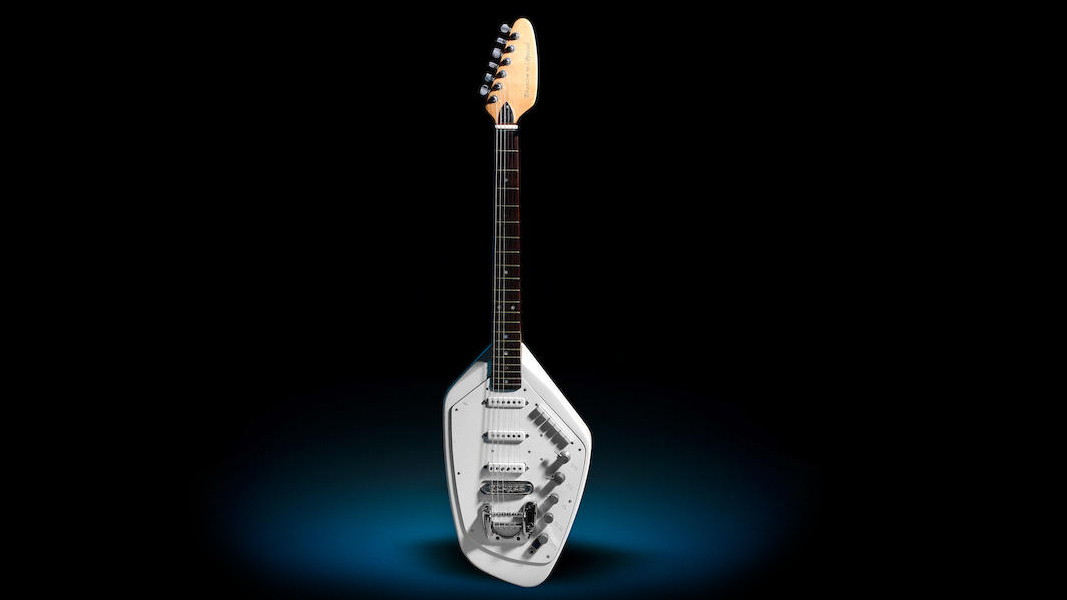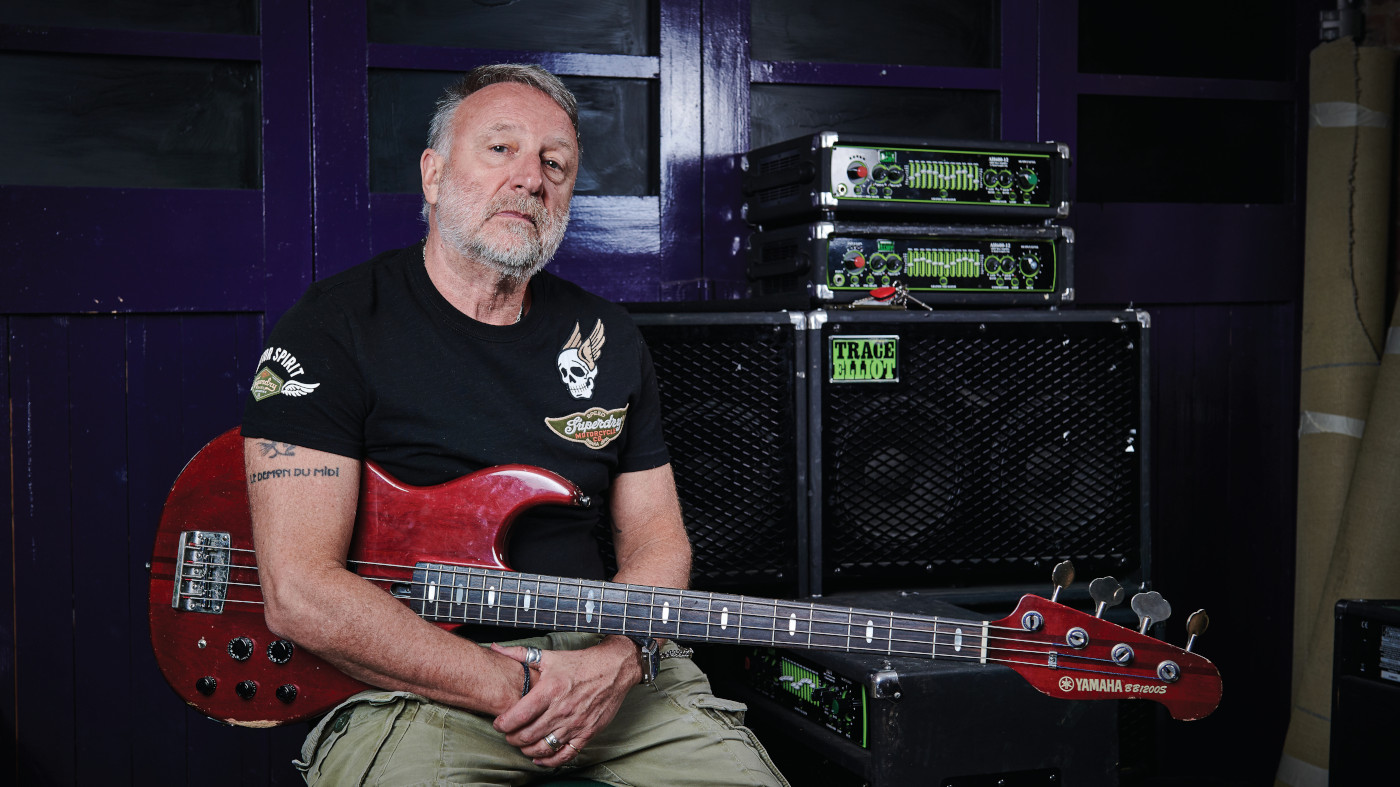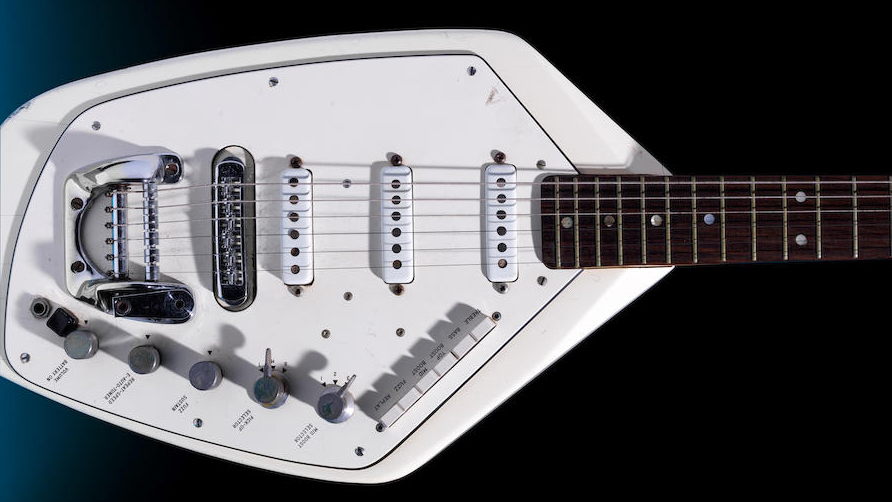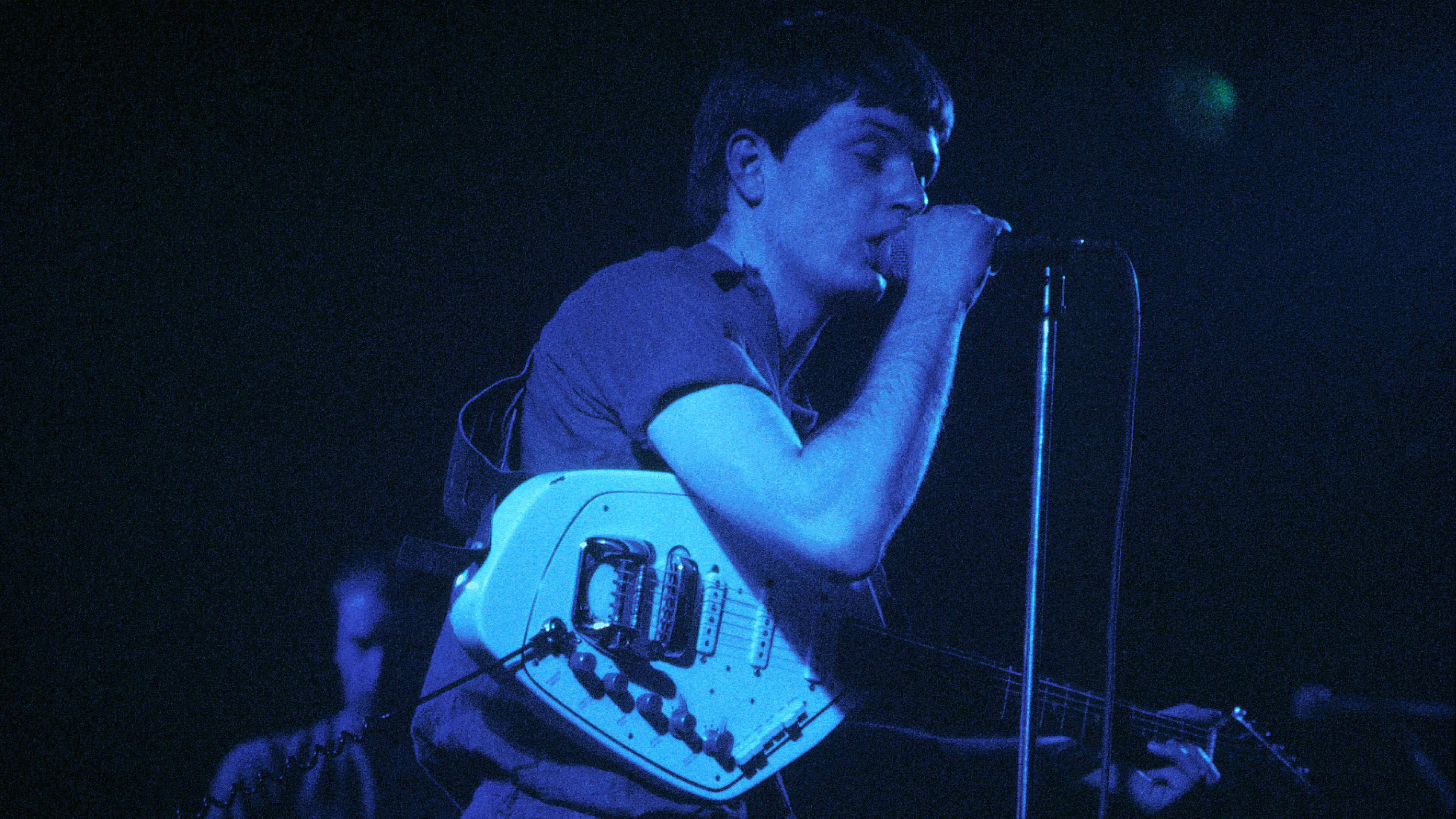Late Joy Division frontman Ian Curtis's 1967 Vox Phantom VI Special electric guitar is going up for auction with Bonham's in London.
As well as being used by Curtis onstage, it was immortalised in the video for the band's classic Love Will Tear Us Apart.
It was used by bandmate and now New Order frontman Bernard Sumner following Curtis's death in 1980, before being gifted to his daughter Natalie Curtis in 2002.

The British-made guitar (serial number 76634) is an unusual instrument with a pentagonal mahogany body finished in white with Jennings' Bigsby B5-type tremolo, Tune-o-matic roller bridge, three pickups with six push-button controls – including a misprinted 'Replat' for 'Repeat'.
It also features five rotary controls and a cavity for PP3 battery conversion and a one-piece maple neck with zero-fretted rosewood fingerboard.


The Joy Division and New Order hero looks back on his genre-defining legacy
"The guitar has a battery in it," says former Joy Division guitarist and current New Order frontman Bernard Sumner, "and if you press the buttons in the wrong combination it will go into self-oscillate mode and start to make this strange twittering sound that Ian liked very much. It is a pretty wacky guitar. It sounded like some of the thinner guitars on Velvet Underground tracks, clean and jangly."
It still has its original frets, dot markers, headstock through the Schaller machineheads are non original.
Want all the hottest music and gear news, reviews, deals, features and more, direct to your inbox? Sign up here.

It comes in a hard rectangular, plush-lined case, accompanied with a copy of the 12" single for the 40th anniversary of "Love Will Tear Us Apart" on vinyl, and a letter of provenance from Ian's daughter Natalie Curtis.
The Phantom was purchased in September of 1979 by Joy Division's manager, Rob Gretton, and was later used by Curtis on stage during Joy Division's 1980 European Tour, as well as on the recording of the post-punk legends' track Heart and Soul.

"The Phantom had tons of effects built into it, as an added bonus"
Bernard Sumner
The picture above shows Curtis playing the guitar on the 1980 tour during a London date at the Lyceum on 29 February.
"Ian really liked this guitar," Sumner states in Pat Graham's book, Instrument. "The Phantom had tons of effects built into it, as an added bonus. It had a pause unit, and a thing called the 'replat'. When we got the guitar, half the effects didn't work, and we were thinking, "what the hell is replat?" We got the guitar repaired, and it turned out that 'replat' is actually 'repeat' - it was just a misprint."
After the guitar stayed with the band as they became New Order, they used it for recordings including 1981's Everything's Gone Green. Eventually it was passed on to Ian's daughter, Natalie.
"The guitar came to me at a time in my life when I was keen to learn more about my late father," she says. "I'm not at all musical, yet it is fascinating to see my father's guitar, I mean, it's such personal thing. Since I'm a visual person, the Phantom is especially interesting to me, as the design is rather unusual. I grew up around and have worked with musicians, and although I've seen a lot of guitars, I've never seen anything like this.
"From everything I've been told about my father, he was very obsessed with how things looked, and so to me the Phantom makes sense and very much feels like Ian Curtis's guitar. It's obviously super cool, regardless of its previous owner, and it sounds great, and even though I wouldn't know what the hell to do with them, the geek in me loves all the built-in effects. If I had any kind of aptitude, it's the sort of guitar I'd want for myself! As I didn't know my father, it's quite special to gain this further insight and to discover that our tastes align."
The guitar will be auction by Bonham's in Knightsbridge, London on 13 October and has an estimate of £60,000 - £80,000.
For more information visit Bonhams.com

Rob is the Reviews Editor for GuitarWorld.com and MusicRadar guitars, so spends most of his waking hours (and beyond) thinking about and trying the latest gear while making sure our reviews team is giving you thorough and honest tests of it. He's worked for guitar mags and sites as a writer and editor for nearly 20 years but still winces at the thought of restringing anything with a Floyd Rose.